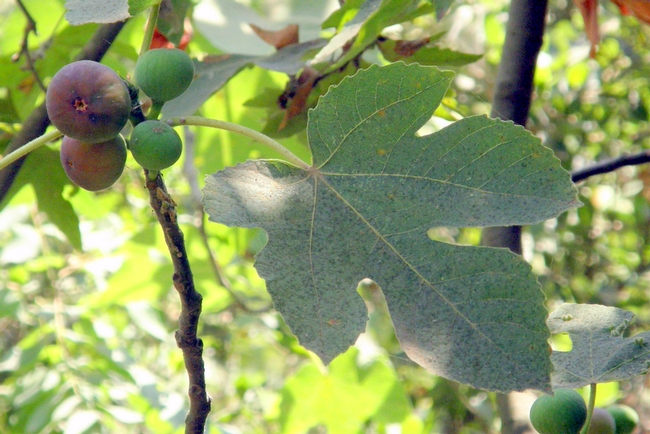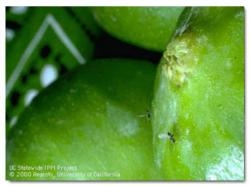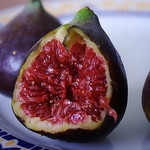I learned a lot of new, interesting information during the Master Gardener program. One of the most interesting things that I learned, that I love to share with people, is that some figs could be considered carnivorous. Ok, maybe that is making things sound a little too much like "Little Shop of Horrors," but at the very least some of the figs you have eaten in your lifetime were not exactly vegan (yes, there is debate about this on internet forums).
As figs are starting to show up at local farmer's markets now, I thought this would be a great time to share this little tidbit with the blog, so that other people can use this information as fun garden party banter.
Around the world there are over 700 varieties of figs, but they all fall into four types:
Common: Common figs (such as the Brown Turkey) do not require pollination from another tree, or from a wasp. True to their name, common figs are most common in home gardens. Common figs are 100% vegan.
Caprifigs: Caprifigs produce small non-edible fruit (also called a male fruit because it contains male flowers). The purpose of the caprifig is to produce pollen that fertilizes the last two types of figs, Smyrna and San Pedro. The pollen produced by the caprifig is transported to the female fruit (which contains the female flowers) by the Blastophaga wasp.
Smyrna: Smyrna figs produce a large edible fruit, but the figs must be pollinated. If the figs are not pollinated they will shrivel and fall from the tree.
San Pedro: San Pedro figs produce two crops per season. The first crop, called the Breba, ripens in early spring on the previous season's growth and requires no pollination. The second crop, also called the main crop, happens later in summer, on the current season's growth, and requires pollination from a caprifig and Blastophaga wasp.
Now, a little more about the fig's friend, the Blastophaga wasp and how figs are pollinated. What we commonly think of as the fig "fruit" is actually an accumulation of tiny flowers all contained inside the "fruit." It is these flowers that need to be pollinated in Smyrna and San Pedro-type figs. The fruits produced by Smyrna and San Pedro-type figs have an opening on the end of the fruit, called the ostiole.
Female Blastophaga wasps will lay their eggs inside the male caprifigs. The male wasps emerge, wingless, from their eggs first and fertilize the female wasps before the females emerge from the flowers they were laid in. Most male Blastophaga die before exiting the fruit.
The female Blastophaga, thanks to her wings, can exit the caprifig to enter a female fruit where she will try to deposit her eggs. On her way out of the male caprifig she picks up pollen from the male flowers which she carries with her into the female fruit. Upon entering the female fruit her wings are ripped off. She has been tricked! Not only can she not lay her eggs in the female fruit (because the female flowers are not compatible with her egg-laying needs,) but she cannot escape! Thus, after pollinating the female fruit, the female Blastophaga dies inside the female fruit (yes, the edible fruit).
These tricky figs contain a specialized enzyme to break down the female Blastophaga wasp's body, but the moral of the story is that when you eat a Smyrna-type fig, or a late-harvest San Pedro-type fig, you are eating a carnivorous fruit!


